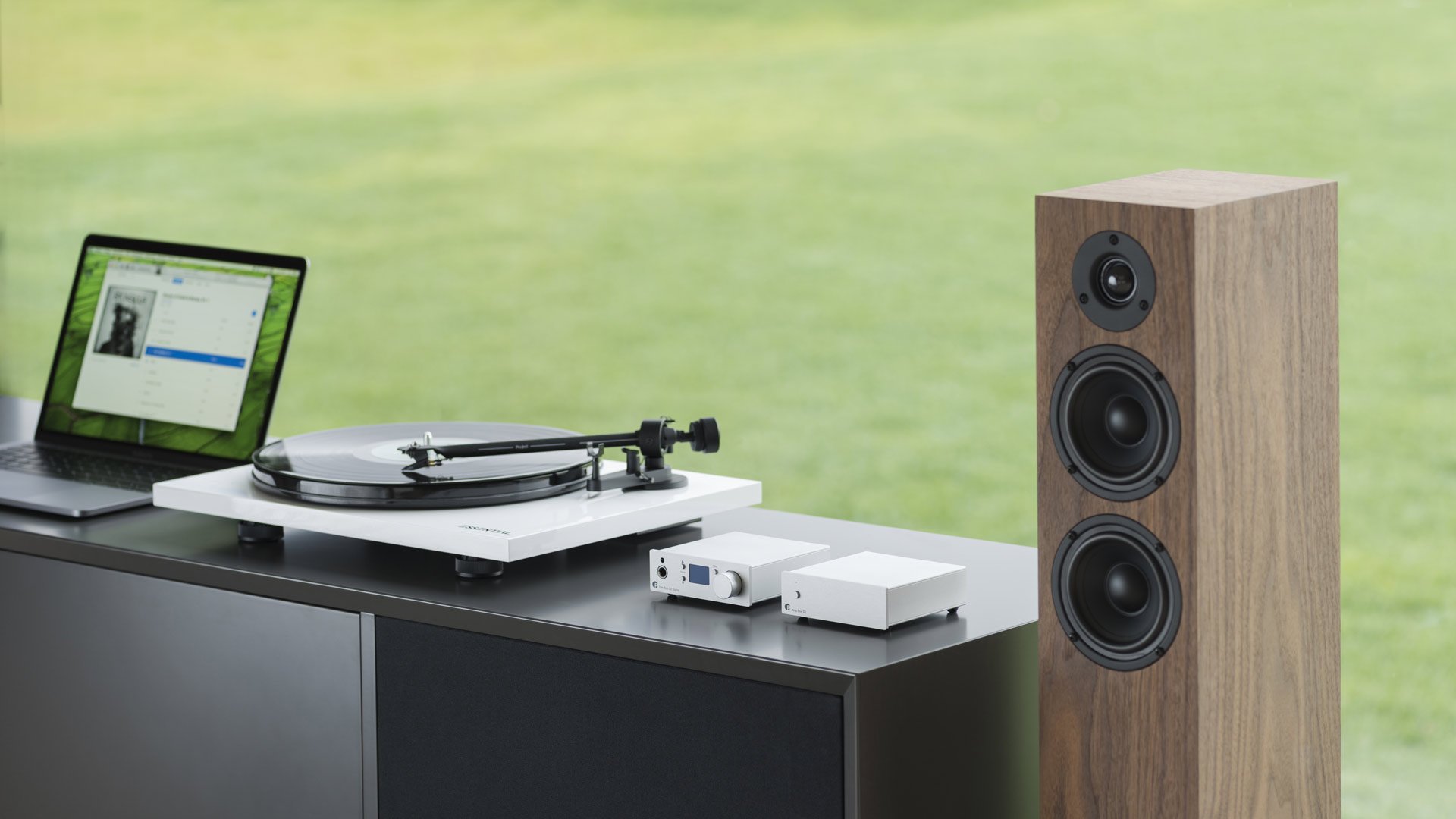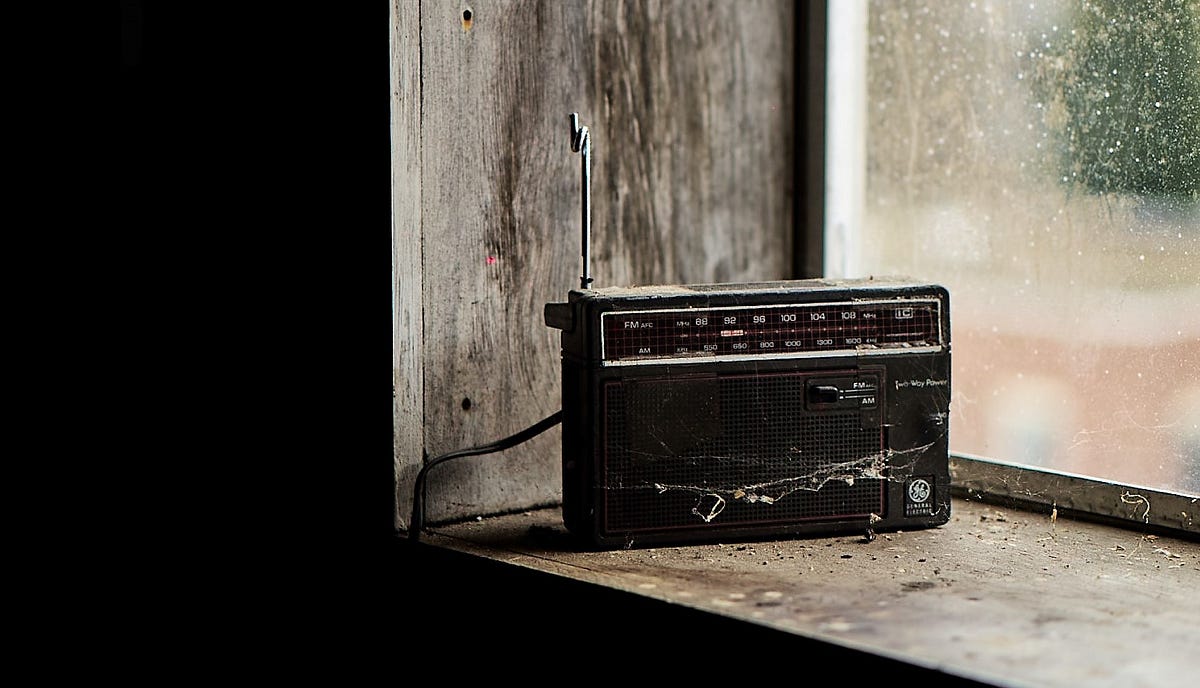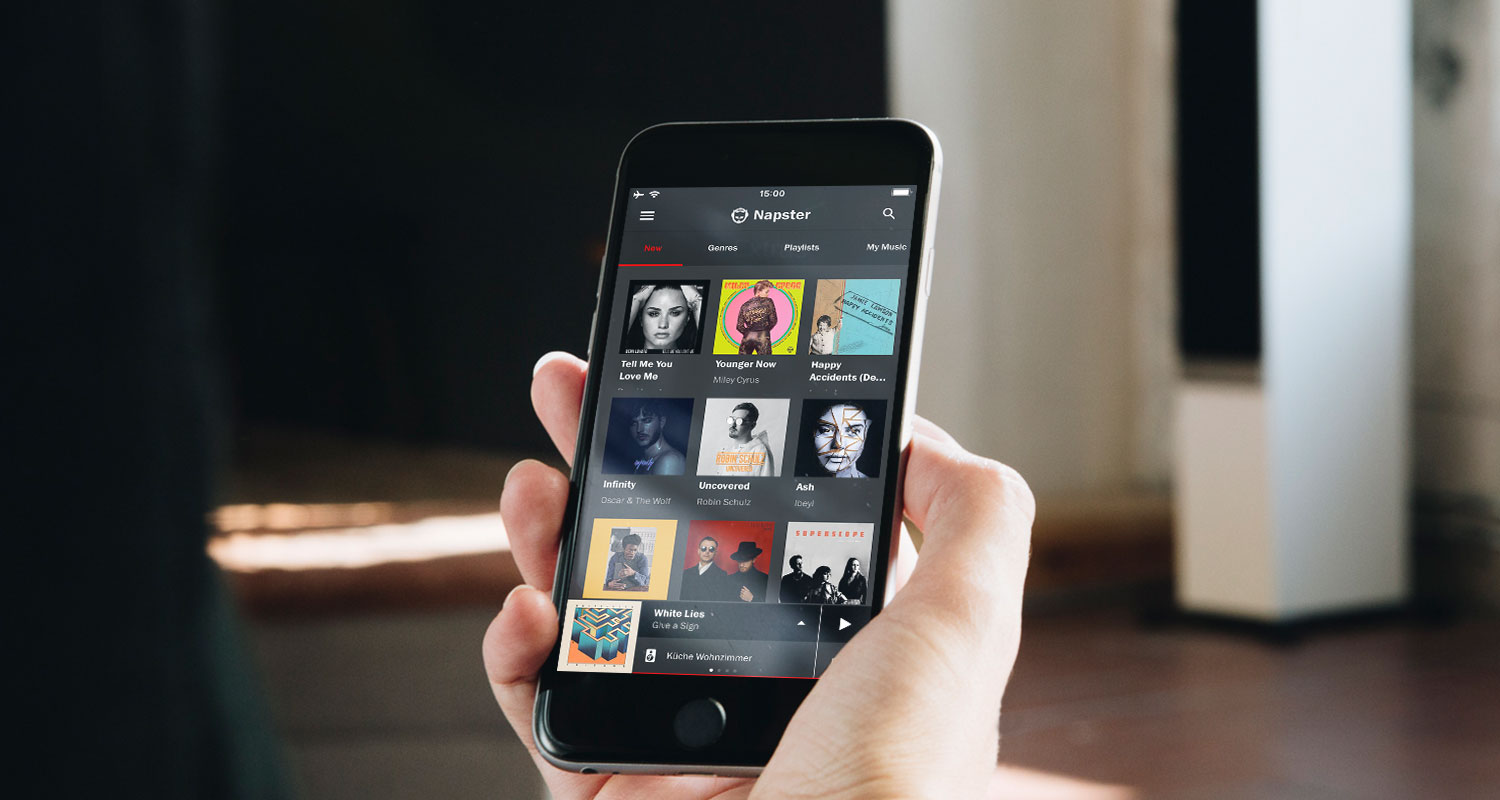Home>Production & Technology>Stereo>What Does Phono Mean On A Stereo


Stereo
What Does Phono Mean On A Stereo
Modified: January 22, 2024
Discover the meaning of "phono" on a stereo and how it relates to your audio experience. Uncover the mysteries of stereos and their capabilities in this informative guide.
(Many of the links in this article redirect to a specific reviewed product. Your purchase of these products through affiliate links helps to generate commission for AudioLover.com, at no extra cost. Learn more)
Table of Contents
Introduction
Welcome to the world of stereo systems, where the pursuit of high-quality audio is a never-ending quest. If you’ve ever looked at the back of a stereo receiver or amplifier, you might have noticed a port labeled “phono.” This mysterious term may have left you wondering what exactly it means and what its purpose is in the audio world. In this article, we will demystify the concept of “phono” and explore its significance in stereo systems.
Phono is short for phonograph, which is an early name for the turntable or record player. In the earlier days of audio technology, vinyl records were the primary means of enjoying music. However, the output from a turntable is different from the standard line-level output of other audio sources like CD players or smartphones. This is where the phono input on a stereo comes into play.
The phono input is designed specifically to connect a turntable to a stereo system. It is a specialized input that applies equalization and amplification to the low-level signal produced by the turntable’s cartridge. The cartridge contains a stylus that traces the grooves on the vinyl record, converting the physical vibrations into an electrical signal.
Without a phono input, connecting a turntable directly to a standard line-level input would result in a weak, distorted sound. The phono input corrects this by boosting the signal and applying the necessary equalization curve to reproduce the sound as it was intended.
In the next sections, we will explore the technical aspects of phono inputs and outputs, their purpose in a stereo system, how they work, and the benefits they bring to audio enthusiasts. So, let’s dive into the world of phono and discover why it is an essential component of a stereo system.
Definition of Phono
In the context of stereo systems, the term “phono” refers to a specialized input/output configuration designed specifically for connecting a turntable or record player. The phono input is found on stereo receivers, amplifiers, and other audio equipment.
The term “phono” is derived from “phonograph,” which is an early name for a turntable or record player. In its simplest form, a turntable consists of a rotating platter, a tonearm, and a cartridge or stylus. The stylus is fitted with a needle that tracks the grooves of a vinyl record, producing an analog electrical signal as it moves. This signal needs to be properly amplified and equalized to be reproduced as audible sound.
The phono input on a stereo system is specifically tailored to handle the unique characteristics of a turntable’s analog output. It applies the necessary equalization and amplification to the signal, ensuring accurate playback of the recorded music.
It is important to note that with the advent of digital media and the rise of digital audio formats, such as CDs and streaming, the use of turntables and vinyl records declined. As a result, many modern stereo systems no longer feature a dedicated phono input. However, for audio enthusiasts who appreciate the warm, analog sound of vinyl, a phono input remains crucial for maintaining the integrity of the audio signal.
Now that we have a clear understanding of what “phono” means in the context of stereo systems, let’s explore the purpose and functionality of phono inputs and outputs in more detail.
Phono Inputs and Outputs
Phono inputs and outputs are integral components of a stereo system, allowing for the connection and playback of turntables or record players. These specialized ports are designed to handle the unique analog output of a turntable and ensure optimal sound reproduction.
Phono Inputs: The phono input on a stereo system is where you connect the output from your turntable. It is typically labeled as “phono” or “MM/MC” (Moving Magnet/Moving Coil) to indicate compatibility with different types of cartridges. The phono input applies the necessary equalization and amplification to the low-level signal produced by the turntable’s cartridge, ensuring accurate sound reproduction.
Phono Outputs: Some stereo systems also feature phono outputs, which allow for the connection of external devices. These outputs can be used to connect additional components like preamplifiers, equalizers, or audio recorders. Using phono outputs can provide flexibility in your audio setup and allow for more advanced customization of your sound.
It is important to note that not all stereo systems have dedicated phono inputs or outputs. As the popularity of vinyl declined and digital formats took over, many manufacturers started omitting phono connections from their products. In such cases, you may need to use an external phono preamplifier to convert the turntable’s analog signal to a line-level signal that can be connected to a standard auxiliary or line input.
To ensure compatibility, it is essential to check the specifications of your stereo system and turntable. Some turntables have built-in phono preamplifiers, allowing them to be directly connected to a standard line-level input on a stereo system. Others require an external phono preamplifier to be connected between the turntable and the stereo system.
Now that we understand the purpose and functionality of phono inputs and outputs, let’s explore why they are crucial for achieving optimal sound quality in a stereo system.
Purpose of Phono on a Stereo
The main purpose of having a phono input on a stereo system is to ensure accurate playback of vinyl records. Vinyl records, unlike other audio sources like CDs or digital files, have a unique analog sound that requires special handling. Let’s explore some key reasons why the phono input is crucial for vinyl playback.
Equalization: Vinyl records are manufactured using a process called RIAA equalization. During the recording process, certain frequency ranges are boosted, while others are attenuated. This equalization curve is applied to the audio signal to mitigate physical limitations and improve sound quality. The phono input on a stereo system applies the inverse RIAA equalization curve, effectively “flattening” the audio signal and restoring it to its original form. Without this equalization, the playback sound would be distorted and unbalanced.
Amplification: The output signal from a turntable’s cartridge is very low in voltage, usually around 5-10 millivolts. This low-level signal needs to be amplified significantly to match the line-level signal required by a stereo system. The phono input on a stereo system includes a built-in phono preamplifier, which boosts the signal to a level suitable for playback. Without this amplification, the sound from a turntable would be barely audible and lack the necessary dynamics.
Noise Reduction: Vinyl records are susceptible to various forms of noise, such as surface scratches, pops, and clicks. The phono input on a stereo system includes a built-in noise reduction circuitry, such as a phono preamplifier, that helps minimize these imperfections. It achieves this by applying filters and other techniques to reduce the impact of unwanted noise during playback.
Preserving Analog Sound: Vinyl records have a distinct “warmth” or “richness” to their sound that many audio enthusiasts appreciate. The phono input on a stereo system is specifically designed to preserve and reproduce this analog sound faithfully. By handling the unique characteristics of turntable output, the phono input ensures that the audio signal maintains its original warmth and characteristics throughout the playback process.
While the use of vinyl records has declined in recent years, the nostalgia and charm associated with them continue to attract audiophiles. The phono input on a stereo system allows these enthusiasts to enjoy the full potential of their vinyl collections, ensuring an authentic and immersive musical experience.
Next, we’ll explore how the phono input works and the technical aspects behind its operation.
How Phono Works
The functioning of a phono input on a stereo system involves various technical aspects to ensure accurate playback of vinyl records. Understanding how it works can help us appreciate its importance in preserving the integrity of the audio signal.
Equalization and RIAA Curve: As mentioned earlier, vinyl records are recorded using the RIAA equalization curve, which boosts certain frequencies and attenuates others. The phono input on a stereo system includes a built-in phono preamplifier that applies the inverse of this equalization curve to the incoming signal. This process effectively “flattens” the audio signal, bringing it back to its original form and preparing it for amplification.
Amplification: The output signal from a turntable’s cartridge is very low in voltage, typically in the range of 5-10 millivolts. The phono preamplifier in the phono input amplifies this weak signal to a line-level voltage, which is typically around 1 volt. This amplification is necessary to match the signal level of other audio sources and ensure proper playback through the stereo system’s speakers.
Noise Reduction: Vinyl records can suffer from surface noise, such as scratches, pops, and clicks. The phono input on a stereo system includes various noise reduction techniques to minimize these imperfections. The phono preamplifier often includes filters and other technologies that help reduce unwanted noise, resulting in a cleaner and more enjoyable listening experience.
Cartridge Compatibility: The phono input on a stereo system is designed to accommodate different types of cartridges, such as moving magnet (MM) and moving coil (MC). These cartridges have different electrical characteristics, and the phono input must be able to correctly handle the specific type of cartridge being used. Some stereo systems may have switchable phono inputs, allowing you to select the appropriate setting based on your cartridge type.
Cabling and Grounding: Proper cabling and grounding are important for the phono input to function effectively. Turntables with a separate grounding wire should be connected to the corresponding grounding point on the phono input or the stereo system. This grounding helps reduce unwanted noise and interference that may affect the playback quality.
The phono input on a stereo system is a specialized component that tailors the audio signal from a turntable for accurate playback. By applying the necessary equalization, amplification, and noise reduction techniques, it ensures that the unique sound of vinyl records is faithfully reproduced. Understanding the inner workings of the phono input can lead to a deeper appreciation for the attention to detail required in preserving the analog sound of vinyl records.
In the following sections, we will explore the benefits of having a phono input on a stereo system and the steps involved in setting up a phono connection.
Benefits of Phono on a Stereo
The inclusion of a phono input on a stereo system offers several significant benefits for audio enthusiasts who appreciate the unique qualities of vinyl records. Let’s explore some of the key advantages of having a phono input in your audio setup:
Preserving Analog Sound: Vinyl records have a distinct warm and rich sound that many people find appealing. The phono input on a stereo system is specifically designed to accurately reproduce this analog sound, maintaining its unique characteristics and nuances. By handling the specific equalization and amplification requirements of turntables, the phono input ensures that the sound of vinyl records is faithfully captured and played back with the utmost fidelity.
Optimal Sound Quality: The phono preamplifier built into the phono input boosts the low-level signal from the turntable’s cartridge and applies the necessary equalization to ensure proper playback. This results in enhanced sound quality, with improved dynamics, clarity, and depth. The dedicated phono input allows for accurate reproduction of the music as it was intended, without the signal degradation that could occur if the turntable were connected to a standard auxiliary or line input.
Noise Reduction: Vinyl records can have imperfections such as surface scratches, pops, and clicks. The phono input often includes noise reduction technologies, such as filters and advanced circuitry, to mitigate these issues. This helps to minimize unwanted noise and improve the overall listening experience, allowing the music to shine through without distraction.
Compatibility with Turntables: The phono input is specifically designed to accommodate different types of turntable cartridges, such as moving magnet (MM) and moving coil (MC). This ensures compatibility with a wide range of turntable models, allowing you to connect and enjoy your preferred turntable without the need for additional adapters or modifications.
Convenience: Having a dedicated phono input on a stereo system eliminates the need for external phono preamplifiers or converters. This streamlines the setup process and reduces the number of components required, making it easier to enjoy your vinyl collection. Simply connect your turntable to the phono input, and you’re ready to immerse yourself in the world of analog music.
Future-Proofing: While vinyl records may have experienced a decline in popularity at certain periods, they have also seen a steady resurgence in recent years. Many music enthusiasts are rediscovering the joys of vinyl, and having a phono input ensures that your stereo system is ready to accommodate this format. By having a phono input, you can easily incorporate the timeless sound of vinyl into your audio setup without the need for additional equipment.
In summary, the phono input on a stereo system offers several notable benefits, including the preservation of the analog sound of vinyl records, improved sound quality, noise reduction, compatibility with different turntable cartridges, convenience, and future-proofing. By having a dedicated phono input, you can fully appreciate the unique qualities and pleasures that vinyl records bring to the world of music.
Next, we will explore the steps involved in setting up a phono connection and some troubleshooting tips to address common phono-related issues.
Setting up a Phono Connection
Setting up a phono connection requires a few simple steps to ensure optimal sound quality and proper functionality. Whether you have a stereo system with a dedicated phono input or need to use an external phono preamplifier, here is a general guide to help you set up your phono connection:
- Turntable Placement: Find a suitable location for your turntable. It should be placed on a stable surface away from sources of vibration, such as speakers or subwoofers, which can affect playback quality.
- Connect the Turntable: Take the cables from your turntable, usually RCA cables, and connect them to the respective outputs on the turntable. The left channel goes to the left input, and the right channel goes to the right input. Make sure the connections are secure.
- Connect the Phono Input: If your stereo system has a dedicated phono input, connect the other end of the RCA cables to the phono input. If your stereo system does not have a phono input, you will need to use an external phono preamplifier. Connect the RCA cables from the turntable to the input of the phono preamplifier, and then connect the output of the preamplifier to a standard line-level input on your stereo system, such as AUX or CD.
- Grounding: If your turntable has a separate grounding wire, connect it to the designated grounding point on the phono input or the stereo system. This helps reduce unwanted noise and interference during playback.
- Power Up: Power on your stereo system and turntable. Make sure the volume of your stereo system is set to a reasonable level.
- Select the Phono Input: If your stereo system has multiple inputs, select the input that corresponds to the phono input. This may involve using a source selector switch or navigating through your system’s menu options.
- Test and Fine-Tune: Play a vinyl record and listen for sound through your stereo system’s speakers. Adjust the balance, tone controls, and volume level to achieve your desired sound. Fine-tune the settings on your phono input or external phono preamplifier, if available, to optimize the sound quality.
It is important to note that the specific setup process may vary depending on your stereo system and turntable model. Always refer to the user manuals for both devices for detailed instructions specific to your equipment.
If you encounter any issues during the setup process or experience problems with your phono connection, here are a few troubleshooting tips:
- No Sound: Check that all cable connections are secure and properly connected to the correct ports. Ensure that the volume is turned up on your stereo system and that the phono input is selected.
- Poor Sound Quality: If you notice distortion, imbalance, or other quality issues, check that the cartridge and stylus are clean and in good condition. Adjust the tracking force and anti-skate settings on your turntable as per the manufacturer’s recommendations.
- Grounding Issues: If you hear a buzzing or humming noise, check the grounding connection between the turntable and the phono input or stereo system. Ensure that the ground wire is securely attached and that it is connected to the appropriate grounding point.
- External Preamplifier Settings: If you are using an external phono preamplifier, check that the settings on the preamplifier are properly adjusted for your specific cartridge type (MM or MC). Refer to the preamplifier’s manual for guidance on the correct settings.
By following these steps and troubleshooting guidelines, you can set up a phono connection and enjoy the warm and authentic sound of vinyl records through your stereo system.
Finally, let’s conclude our exploration of phono inputs and their significance in the world of stereo systems.
Troubleshooting Phono Issues
While setting up and using a phono connection in a stereo system can provide an immersive and enjoyable musical experience, it’s not uncommon to encounter some issues along the way. Here are some common problems that may arise when using a phono input and some troubleshooting tips to help you resolve them:
No Sound: If you’re not getting any sound through your speakers when playing a vinyl record, there are a few things you can check. First, ensure that the turntable is properly connected to the phono input or external phono preamplifier. Verify that the cables are securely plugged in and that there are no loose connections. Make sure that the volume level on the stereo system is turned up and that the phono input is selected. If the problem persists, check the stylus and cartridge to ensure they are clean and properly aligned. A worn-out stylus or cartridge may need replacement.
Poor Sound Quality: If you are experiencing distortion, imbalance, or other quality issues with the sound from your turntable, there are a few factors to consider. First, check that the stylus is clean and free from dust or debris. A dirty stylus can affect the accuracy of the playback. Additionally, make sure that the tracking force and anti-skate settings on your turntable are correctly adjusted according to the manufacturer’s specifications. Incorrect settings can result in poor sound quality and tracking issues.
Grounding Issues: If you hear a buzzing or humming noise when using the phono input, it may be due to grounding issues. Ensure that the turntable is properly grounded by connecting the grounding wire to the designated grounding point on the phono input or stereo system. Check that the grounding connection is secure and that there are no loose or damaged wires. You can also try connecting the turntable and the audio system to the same power outlet or power strip to improve grounding. If the problem persists, it may be worth checking the grounding of other components in your audio setup.
Feedback or Interference: Feedback or interference issues can be caused by various factors, including the proximity of the turntable to speakers, subwoofers, or other electronic devices. Try moving the turntable away from these sources of electromagnetic interference to see if it resolves the problem. Additionally, check that the cables connecting the turntable to the phono input or preamplifier are not running too close to power cables or other audio/video cables, as this can introduce interference. Using high-quality shielded cables can also help mitigate interference issues.
If you have tried troubleshooting the above issues and are still experiencing problems with your phono connection, consulting the user manuals for your turntable, stereo system, or phono preamplifier can provide specific guidance. Additionally, reaching out to a professional audio technician may be beneficial for more complex or persistent issues.
Remember, proper maintenance and care of your turntable, stylus, and other components are crucial for optimal performance. Regular cleaning and maintenance can help prevent issues and ensure a long lifespan for your equipment.
By addressing and troubleshooting these common phono issues, you can make the most of your vinyl collection and enjoy a seamless and high-quality audio experience through your stereo system.
Now, let’s conclude our exploration of phono inputs and their role in stereo systems.
Conclusion
Phono inputs play a crucial role in stereo systems, allowing audio enthusiasts to fully experience the warm and authentic sound of vinyl records. By applying the necessary equalization, amplification, and noise reduction, phono inputs ensure optimal sound quality and faithful reproduction of the music as it was intended.
Throughout this article, we have explored the definition of phono and its significance in the audio world. From understanding the technical aspects of phono inputs and outputs to learning about their purpose and benefits, we have gained insights into why phono is an essential component of a stereo system.
The benefits of having a phono input include the preservation of analog sound, improved sound quality, noise reduction, compatibility with different turntable cartridges, convenience, and future-proofing. These advantages make the phono input a crucial feature for vinyl enthusiasts who seek to indulge in the unique sonic experience of vinyl records.
We have also discussed the steps involved in setting up a phono connection, emphasizing proper turntable placement, cable connections, grounding, and troubleshooting tips for common phono-related issues. By following these guidelines, audiophiles can ensure an optimal and hassle-free phono setup.
While the popularity of vinyl has fluctuated over the years, its enduring charm and resurgence have kept the phono input relevant in stereo systems. The phono input allows music lovers to delve into the world of vinyl records, immersing themselves in the nostalgia and rich musical experience that only analog audio can provide.
So, whether you are a dedicated vinyl enthusiast or simply curious about the unique characteristics of vinyl sound, the phono input on a stereo system is your gateway to a captivating and authentic listening experience.
Embrace the warmth, the richness, and the soulful sound of vinyl through the phono input, and let your favorite records come alive in a way that digital formats simply cannot replicate.
With the right equipment, proper setup, and a collection of cherished vinyl records, the phono input on your stereo system becomes the conduit that connects you to the timeless world of music.











